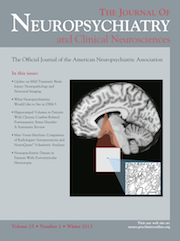Fractal and Statistical Features for the Discrimination Between Patients With Amyotrophic Lateral Sclerosis and Healthy Adults
To the Editor: Amyotrophic lateral sclerosis (ALS) is a neurodegenerative disorder, by which 2 in 100,000 individuals are affected each year,1 that affects primary motor neurons in cerebral cortex, brain stem, and spinal cord.2 Degeneration of motor neurons will hinder sending cerebrum impulses to the muscle fibers, impairing voluntary movements. Muscle twitching and spasticity, difficulties in speech, swallowing, and breathing are most commonly known symptoms of ALS. One of the most salient features in determining disease severity and appropriate treatment is gait disorder in form of increase in mean stride interval and decrease in mean speed of walking.3 Stride-to-stride fluctuations in healthy adults show alteration in a chaotic manner; these have a fractal (self-similar) structure more than a random one,4,5 which would approach a stochastic state.5
Hausdorff et al.3 are one of the first investigators who have worked on the neurological disorders, namely, Parkinson disease, Huntington disease, and ALS, whose recorded data have been utilized by many researches so far. According to their quantitative analysis, gait dynamic would be altered in statistical characteristics like stride interval fluctuation magnitude as well as fractal dimension characteristics.3 Wu and Shi6 used a nonparametric method based on the parzen-window method to analyze altered gait cycle duration in ALS and to classify patients with ALS and healthy adults based on a least-square support vector machine. They obtained classification accuracy of 92.3%, which is a bit higher than the classification rate of 91.7% obtained by Dutta et al.7 using Elman’s recurrent neural network.
In recent years, chaotic theories have suggested novel approaches in analyzing biological systems; resulting in a better understanding of these complex nonlinear systems. Although chaotic characteristics might be altered according to progression of the disease, little has been done to classify healthy and patient groups based on the fractal dimension method. Fractal dimension of a signal can be used as a valuable tool to analyze transient changes and data-points’ correlation. Moreover, gait symmetry would be affected by neurodegenerative disorders.8 Hence, we suggested classifying patients and healthy subjects using fractal dimension features besides statistical ones. Since gait asymmetry is a feature of a healthy motor control system, we can use both left and right feet stride intervals to gain a more accurate classifier.
Based on mentioned informative feature vector, fractal and statistical features, discrimination between patients and healthy subjects could be well achieved. Using this feature vector and considering asymmetry between left and right feet, different neurological disorders are distinguished from each other, their severity estimated, and appropriate treatment can be accordingly determined more accurately.
1 : Current hypotheses for the underlying biology of amyotrophic lateral sclerosis. Ann Neurol 2009; 65(Suppl 1):S3–S9Crossref, Medline, Google Scholar
2 : Amyotrophic lateral sclerosis. Insights from genetics. Arch Neurol 1997; 54:1246–1250Crossref, Medline, Google Scholar
3 : Dynamic markers of altered gait rhythm in amyotrophic lateral sclerosis. J Appl Physiol 2000; 88:2045–2053Crossref, Medline, Google Scholar
4 : Understanding the complexity of human gait dynamics. Chaos 2009; 19:026108Crossref, Medline, Google Scholar
5 : Gait dynamics, fractals and falls: finding meaning in the stride-to-stride fluctuations of human walking. Hum Mov Sci 2007; 26:555–589Crossref, Medline, Google Scholar
6 : Analysis of altered gait cycle duration in amyotrophic lateral sclerosis based on nonparametric probability density function estimation. Med Eng Phys 2011; 33:347–355Crossref, Medline, Google Scholar
7 : An automated hierarchical gait pattern identification tool employing cross-correlation-based feature extraction and recurrent neural network based classification. Expert Syst 2009; 26:202–217Crossref, Google Scholar
8 : Multi-resolution entropy analysis of gait symmetry in neurological degenerative diseases and amyotrophic lateral sclerosis. Med Eng Phys 2008; 30:299–310Crossref, Medline, Google Scholar



